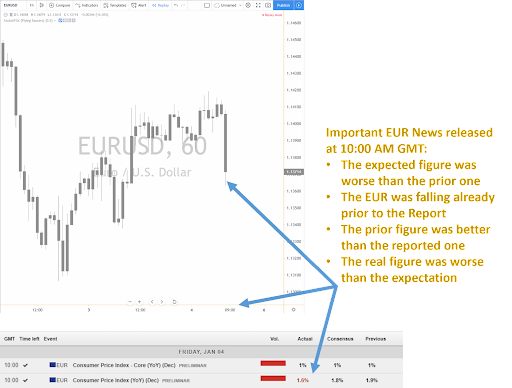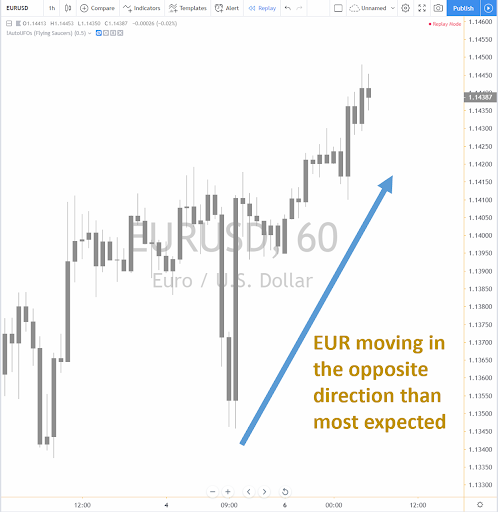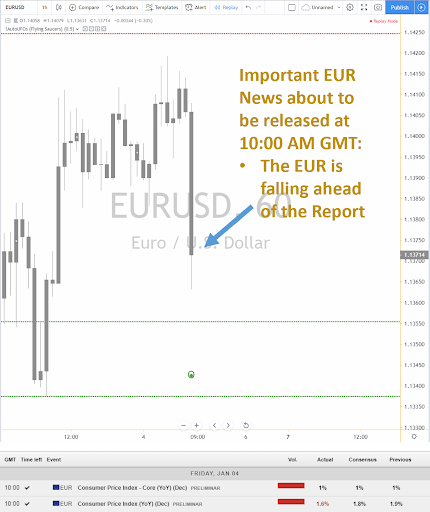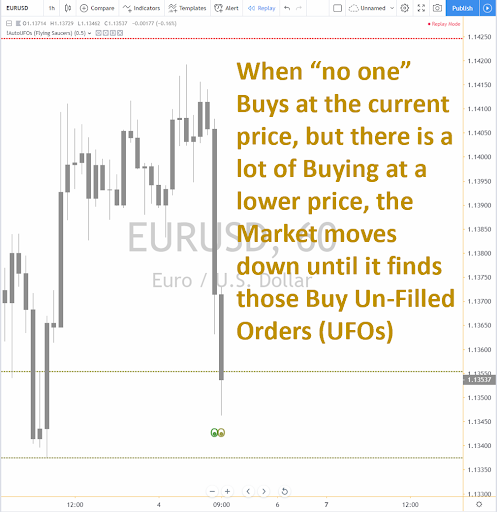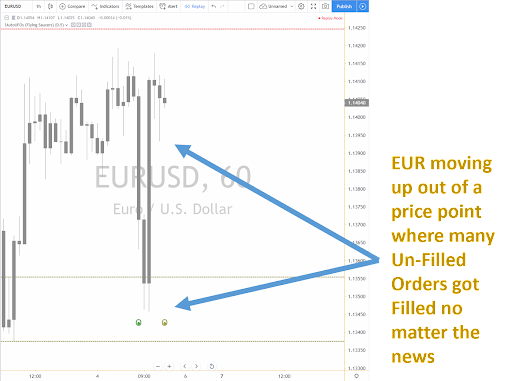This article is an excerpt from Mystery to Mastery Series: Forex Trading by Jose Blasco and Becky Hayman
Order flow refers to the continuous process by which buy and sell orders keep coming in and out of a specific market. As you read this, there are people pressing “buy” and there are people pressing “sell” and those buy and sell orders are being sent to exchanges or interbank systems. If there is a buyer of a specific asset and a seller, then they will find each other electronically via those exchanges and interbank systems.
This is what we mean when we say “filled order”; it refers to a buy and sell, and transaction of an equal size, actually happening, so, if someone wants to buy 100 shares of stock and presses buy, and someone out there is selling 100 shares of stock, then the buyer’s order is filled and all 100 shares purchased.
Order flow is critical in trading and investing. Without orders coming in and out of a market, the market cannot move. We see this when a market is closed. The US stock market, for example, is open from 9:30 a.m. EST to 4 p.m. EST, meaning it is open for 6.5 hours; this means it’s closed for 17.5 hours. During the time the market is closed, price cannot move as no orders can reach the market.
The amount of buy versus sell orders dictates the movement of the market. If there are more buy orders than sell orders, price must go up. If there are more sell orders than buy orders, price must go down. Think about it like anything else in life: if there is a lot of buying of a product, the price of the product can go up, but if there is a limited number of buyers and various sellers, the price has to go down. This is exactly how financial markets work too.
The beauty of order flow in the markets is that, unlike products in real life, we can see everything that has already happened in terms of orders having been executed. We can see what orders were filled on which days and whether there were more buyers or sellers. The chart certainly represents order flow, but order flow that is gone. The order flow that we want to use as traders is that which is still available.
Depending on finding a valid counterparty, some of the orders that come into the market will be executed (and become Filled Orders) and some may be cancelled after a while.
Orders that are still waiting to be either executed or canceled are known as Un-Filled Orders (UFOs). This is not to be confused with Unidentified Flying Objects (although the app we use that plots them on the chart for us does show them as flying saucers!).
What the app is helping to do is identify where there are buy orders waiting to be executed and where there are sell orders waiting to be executed. We see the Un-Filled Orders on the chart depicted as green (buy) UFOs or red (sell) UFOs. We will explain the use of this technology later in the book.
Direct vs Indirect Forces
There are many forces that may impact a market, such as news, reports, fundamentals, technical factors, even tweets! However, when a market is closed, these factors cannot influence the direction of price, because price cannot move. Price can only move when the trading session is open because that is the only time when buy and sell orders can be executed. In other words, if there was a major news report that was capable of impacting the market, but it was reported over the weekend when the market is closed, then no orders can be filled and the market cannot move. Although the reason for the movement would still be there, it cannot actually have an impact unless the market is open for buy and sell orders to move through it. It is the process of Un-Filled Orders becoming Filled (buy and sell orders that are actually executed) that moves price.
A sensible conclusion is that the flow of orders entering a market is the one direct force responsible for the movement of price. All other reasons (such as news, etc.) would be seen as indirect forces, since their potential influence would only translate in price movement, if and when a significant number of orders changed status from Un-Filled to Filled.
An extreme example of this could be natural disasters. Of course, tsunamis, earthquakes and hurricanes are catastrophic events that could have had a huge impact on various markets. But what if one happens over a weekend? The market cannot react as no orders can enter the market, despite the obvious reality of a natural disaster. We also know that there are some news reports that are fake or, perhaps, government data that is corrected the next day. These things that happen are not accurate, but they still could convince buyers or sellers to enter the markets.
Price movement happens, not because the news is fake or real, big or small but, because of orders. Ultimately, it is all down to the direct force of buy orders and sell orders.
As traders, our job is to catch a move and ride a move in the markets, meaning we enter a market and follow it in a profitable direction. To do this, we certainly do need to rely on the direct force of order flow but, we would suggest that we also go beyond this and use a combination of direct and indirect forces to increase our odds.
Characteristics of Indirect Forces
News, reports, fundamentals, technical factors, etc. are subject to interpretation; large market players may act on them by adding or removing orders from the market and we will never know which they choose to do, if anything at all.
Interpretation is, by definition, subjective. It often puts the smaller market players at risk of being on the wrong side of the market. Part of the reason for this may be that large market players often have access to this type of information ahead of smaller market players so they can act on it first. As interpretation is subjective, they may have a different interpretation than we will, and it will be their orders that are more likely to move the market. Subjectivity cannot be a consistent approach to the market as price moves based on objective reasons: buy orders and sell orders.
Indirect forces are indeed powerful reasons for markets to move but it is often problematic to plan trades exclusively based on this type of information as the outcome would often lack consistency. If price always went up after a particular fundamental report was positive, then it would be common knowledge and everyone would be able to capitalize on it, but this is not the case.
Sometimes, the market does the opposite of what most people would expect from the news or another kind of indirect force. Here is an example:
Here we see that the EURUSD is falling, and we have a report coming out about the Consumer Price Index (CPI), which was predicted to be worse than the previous CPI data. A lot of traders around the world would have shorted this market prior to even seeing the newest released figure as the EURUSD was falling already and the expected figure was to be worse than a prior figure.
Once the new figure came out, and was an even worse number than was expected, even more people would have begun shorting, expecting a further move to the downside. In reality, the opposite happened:
The simple reason that the EURUSD went up instead of down was that there were more buy orders filled than sell orders. Although a generic interpretation would have been that we expected a move to the downside, perhaps large market players already had clues about the information and sold much earlier, because the news was already priced in. Alternatively, perhaps there were other indirect forces that motivated the large market players to buy the euro and they simply used this report to purchase large quantities of the euro at a lower price.
We do not know, nor would we ever be able to find out but, what we know for sure is, there were more buy orders than sell orders. It simply could not be otherwise.
Think of buying and selling like anything else in life, let’s say a property. If someone is trying to sell a property and no one is buying, after a while the seller needs to lower the price to find a buyer. Once the seller lowers the price, perhaps a buyer emerges, and the transaction takes place, and the “order is filled”. If someone wants to buy a property of a certain specification for a set price, and all properties that meet the buyer’s specifications are more expensive, he or she may need a budget increase to be able to buy the property.
With the euro, price was falling because there were many sellers and few buyers. For the euro to turn and go back up, it needed to be that there were few sellers and many buyers. At some point in that region of price where the euro turned, large market players would be buying so much from anyone who wanted to sell, to a point where everyone who wanted to sell had sold and there was no longer a significant number of sellers at any of the above price points. Therefore, price had nowhere else to go but up.
What may seem counterintuitive, but is a fact about price movement, is that price does not move because of excess buying or excess selling. Price movement happens because of lack of buying or lack of selling. In the case of a huge market like the euro, how could we end up with a lack of selling, especially in the case of news reports that are likely to encourage sellers? The answer is because the large market players purchased so much that they removed the sellers, so price moves up looking for the next available seller, like how the price of anything moves in real life.
Characteristics of Direct Forces
Movement occurs when orders change status from Un-Filled to Filled, no matter the reason why those orders entered the market in the first place. Having a way to identify those Un-Filled Orders (UFOs) before they get filled would allow a trader to capture market movements without any sort of subjectivity. No “interpretation” would be needed. We don’t know why the orders are there and we don’t need to know; we simply need to know the objective fact that they are there.
There are small pockets of Un-Filled Orders in the markets that could cause price to pause for a while or cause a small movement in the market. As traders, we want to focus on the larger quantity of orders that are likely to cause bigger and faster movements in the markets. The benefit of this is that once a bigger and faster movement occurs, other traders are likely to join the party and continue to add orders that facilitate that move.
For example, if there is a big stack of buy orders that pushes price up, and then price goes up quickly, traders all over the world may now start buying because they see price going up. Their orders now contribute to price continuing to rise.
This benefits us hugely if we entered at the origin of that move with the initial stack of Un-Filled Orders. For us to make profits, we need others to buy after we buy and push price upwards or sell after we sell and push price downwards.
The question is, “How do we identify UFOs?” To do this, it implies the use of advanced trading technology. Certainly, for people who are experienced and skilled in visually analyzing a chart and finding orders, they could perform this task using their eyes. However, we want to be as mechanical as possible, removing the possibility for human error as much as we can, and basing our trading decisions on objective data, not subjective interpretation.
Additionally, there is more to price than what the human eye can see. It is not just about the structure of the candles that gives us clues about where orders may lie, but information such as volume and the number of trades that took place per candle. These are processes the human eye cannot see and, although we could access that information and analyze it all manually, that would take a long time, and there is still a possibility of error and misinterpretation.
This is why we use technology, which can access the needed information, analyze it and display it to us as trading opportunities, all at the speed of light.
If you were to use the AutoClimate™ app and see that a market is going in a particular direction, and that it is likely to continue to move in that direction, and you know you have UFOs also pointing in the same direction, then it makes a lot of sense to enter at that price. In this case, we have multiple parameters pointing to the same conclusion, which increases the probability of success.
Of course, sometimes orders are canceled and sometimes indirect forces may cause crazy movements in the markets; that’s why we use stops. Although we have higher probability, it still isn’t guaranteed so we always, always, always use stops.
Huge orders that enter the market from large market players are placed within a range of price, so rather than having a huge order for one exact price point, they will add many orders which are at random prices with random quantities within a range of price. Sometimes tricks are played on retail trades, where market makers will show a very large order at a price point, only for it to be removed at the speed of light just as retail traders start adding their orders.
Very large market players spend incredible amounts of money to locate their super-fast computers and servers in the same buildings and floors as exchanges. The proximity means that the fiber optics that connect the computers to the servers have a nanosecond of extra time than if they were farther away. In the modern technological world, they can play games with this extra time, placing large orders and canceling them to create impressions that price is about to move in a certain direction, encouraging novice buy and sell orders, only to cancel the orders and, perhaps, trade in the opposite direction.
The good news is, when a large market player enters a market, even if they break their order into smaller pieces within a range, they will move price. They can do this because they have enough money for their buy orders to surpass the amount of sell orders or vice versa. The AutoUFOs® app, which we use as our tool to identify UFOs, is constantly looking for traces that reveal institutional action.
Using technology that points out where the orders are is much more objective; we don’t need to care if orders are there for manipulation purposes or from news or, because of unemployment numbers. We only care about understanding the climate and the probability of the market going up or down and then entering the market where big stacks of orders are waiting to move price.
This type of process needs to run in real time, as UFOs can be added or subtracted from a market at any moment in time. As traders, we also need to be ready for that; sometimes you may put on a trade, everything seems to be lining up, all the rules are met, and then a new UFO shows up because new orders are added or one that was there before disappears because orders were canceled. This can lead to a change in the climate too, so you should cancel the trade or plan another trade in the opposite direction.
Direct Forces in Action
Using the same chart of the EURUSD as we used before, we will now show what the AutoUFOs® app would have shown at the time, showing us where Un-Filled Orders were waiting to push price up (in this case). To recap, we had a report at 10:00 a.m. GMT, which was expected to report bad news and, then, when it was released, it actually reported even worse news. From this bad news, many people would expect the market to drop so many novice traders around the world would have gone short (or sold) the euro around this time. We now have UFOs on the chart showing us where Un-Filled Orders would have been:
This shows us price moving in the opposite direction to what would be expected because there was a big enough stack of buy orders that could create a vacuum of sellers, leading to the only thing that could happen: price went up.
This is the difference between understanding market mechanics or not. A good comparison might be if we talk about architects. If you are not an architect and you look at a particular building, you may be mesmerized by it, and think “how does it stay up?!” If you were the architect, you look at the building and you would see what went into it: the measurements, the physics of gravity, the technology used to calculate everything, etc. The architect would not be mesmerized as he or she would simply see what was expected given the architect’s understanding of physics.
Traders might see people on the news, or know other traders, who are surprised or amazed about what is happening in the markets. We see order flow and understand what is going on.
Within the markets, we could categorize traders into predators and prey. Ideally, we’d want to be the ultimate predators,to ensure our survival but that’s not possible for retail or individual traders. Our goal as traders is to simply not become prey. We want to enter the market in ways where we benefit from a situation based on probabilities and, if we were to get hurt, we make sure we can survive (stop losses). If you become prey, then you are eaten and cannot survive in the markets.
In other words, when buying and selling, it is key that we buy only when large market players buy and sell only when large market players sell. By aligning our orders with the orders of whoever has the power to move the market, we put probabilities in our favor and increase our likelihood of survival. Using technology that looks for large stacks of orders increases the probability that we are joining the large market players and we are less likely to be prey.
This article is an excerpt from Mystery to Mastery Series: Forex Trading by Jose Blasco and Becky Hayman
The following videos/clips/demonstrations are for educational and instructional purposes only. Traddictiv provides these videos purely for the purpose of demonstrating a method of using the product. Users understand that all the content used in the video is purely for demonstration purposes only and is not a guide and does not provide any indication or prediction of actual results. As a User you understand and agree that hypothetical results obtained through the demonstration, do not indicate, in any way, the results you may receive on using our products.
Editors’ Picks
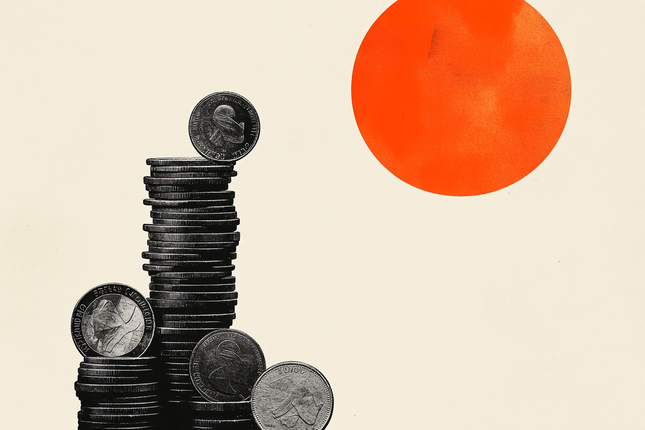
EUR/USD Price Annual Forecast: Growth to displace central banks from the limelight in 2026 Premium
What a year! Donald Trump’s return to the United States (US) Presidency was no doubt what led financial markets throughout 2025. His not-always-unexpected or surprising decisions shaped investors’ sentiment, or better said, unprecedented uncertainty.

Gold Price Annual Forecast: 2026 could see new record-highs but a 2025-like rally is unlikely Premium
Gold hit multiple new record highs throughout 2025. Trade-war fears, geopolitical instability and monetary easing in major economies were the main drivers behind Gold’s rally.

GBP/USD Price Annual Forecast: Will 2026 be another bullish year for Pound Sterling? Premium
Having wrapped up 2025 on a positive note, the Pound Sterling (GBP) eyes another meaningful and upbeat year against the US Dollar (USD) at the start of 2026.

US Dollar Price Annual Forecast: 2026 set to be a year of transition, not capitulation Premium
The US Dollar (USD) enters the new year at a crossroads. After several years of sustained strength driven by US growth outperformance, aggressive Federal Reserve (Fed) tightening, and recurrent episodes of global risk aversion, the conditions that underpinned broad-based USD appreciation are beginning to erode, but not collapse.

Bitcoin Price Annual Forecast: BTC holds long-term bullish structure heading into 2026
Bitcoin (BTC) is wrapping up 2025 as one of its most eventful years, defined by unprecedented institutional participation, major regulatory developments, and extreme price volatility.
RECOMMENDED LESSONS
Making money in forex is easy if you know how the bankers trade!
I’m often mystified in my educational forex articles why so many traders struggle to make consistent money out of forex trading. The answer has more to do with what they don’t know than what they do know. After working in investment banks for 20 years many of which were as a Chief trader its second knowledge how to extract cash out of the market.
5 Forex News Events You Need To Know
In the fast moving world of currency markets where huge moves can seemingly come from nowhere, it is extremely important for new traders to learn about the various economic indicators and forex news events and releases that shape the markets. Indeed, quickly getting a handle on which data to look out for, what it means, and how to trade it can see new traders quickly become far more profitable and sets up the road to long term success.
Top 10 Chart Patterns Every Trader Should Know
Chart patterns are one of the most effective trading tools for a trader. They are pure price-action, and form on the basis of underlying buying and selling pressure. Chart patterns have a proven track-record, and traders use them to identify continuation or reversal signals, to open positions and identify price targets.
7 Ways to Avoid Forex Scams
The forex industry is recently seeing more and more scams. Here are 7 ways to avoid losing your money in such scams: Forex scams are becoming frequent. Michael Greenberg reports on luxurious expenses, including a submarine bought from the money taken from forex traders. Here’s another report of a forex fraud. So, how can we avoid falling in such forex scams?
What Are the 10 Fatal Mistakes Traders Make
Trading is exciting. Trading is hard. Trading is extremely hard. Some say that it takes more than 10,000 hours to master. Others believe that trading is the way to quick riches. They might be both wrong. What is important to know that no matter how experienced you are, mistakes will be part of the trading process.
The challenge: Timing the market and trader psychology
Successful trading often comes down to timing – entering and exiting trades at the right moments. Yet timing the market is notoriously difficult, largely because human psychology can derail even the best plans. Two powerful emotions in particular – fear and greed – tend to drive trading decisions off course.
